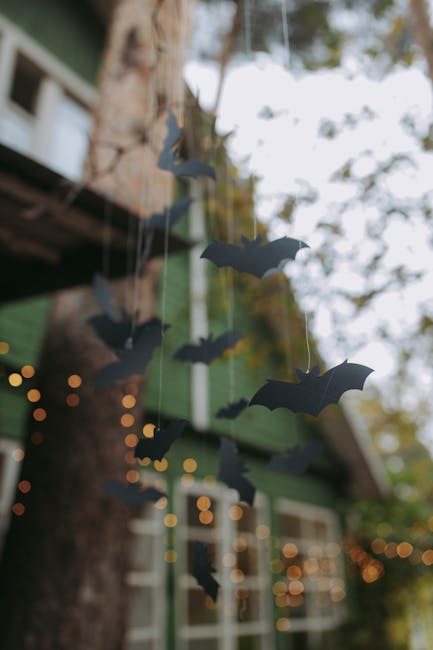Rediscovering the Magic of Bats: A Childhood Wonder
Ever since I was a child, one of my favorite summer pastimes was lying in the shaggy grass, gazing at the sky as bats performed their aerial acrobatics. I’d watch them hunt, marveling at their precision. On quiet evenings, if I listened closely, I could hear the faint flutter of their wings and the occasional squeak piercing the stillness. Now, as an adult, that same sense of wonder washes over me when I spot bats darting through the twilight. I’ve been fortunate to witness them up close—whether roosting behind the shutters of an old apartment building or emerging in massive colonies from a historic bridge in Arizona. Bats have always been a cherished part of my life, and I’ve come to appreciate their vital role in maintaining a healthy ecosystem, especially in my garden.
In this guide, we’ll explore the incredible benefits bats offer, the challenges they face, and how you can attract these flying friends to your garden or backyard. Let’s dive in!
Why Bats Are Your Garden’s Best Allies
Bats are nature’s pest control experts. They feast on flying insects, with a particular fondness for mosquitoes. Instead of reaching for citronella candles or chemical sprays, consider inviting bats into your space. In return for a welcoming habitat, they’ll provide 100% natural insect control. A single bat, weighing about half an ounce (15 grams), needs to consume at least a quarter of its body weight in insects each night. Pregnant females may eat up to their full body weight! Given the tiny size of a mosquito, imagine the sheer number of pesky bugs one bat can eliminate in a single evening. Multiply that by a colony, and you’ve got a powerful, eco-friendly solution to insect problems.
While bats offer numerous benefits to gardens and neighborhoods, their role as natural pest controllers is, in my opinion, the most impactful. Let’s look closer at why we should champion their presence.
The Plight of Bats: Threats to Their Survival
North America is home to 44 bat species, some of which are endangered or listed as species of concern. These remarkable creatures face significant challenges due to environmental and human-induced stressors. One devastating threat is white-nose syndrome, first identified in 2007 in New York caves. Caused by the fungus Pseudogymnoascus destructans, this disease often appears around bats’ noses and forces them to deplete their energy reserves during hibernation. Since bats live in close-knit colonies, the disease spreads rapidly, leading to population losses exceeding 90% in some areas.
Recovery is slow for bat populations because they typically produce only one offspring per year and have a lifespan of 5 to 10 years. Unlike rodents, which breed prolifically, each bat pup represents a significant investment. Human activities further exacerbate their decline. Misconceptions—often fueled by pop culture tropes from ‘80s movies—paint bats as rabies-ridden threats. This stigma has led to extermination efforts and the destruction of their habitats, such as closing old mines or removing dead trees where bats roost. Between environmental dangers and human pressures, bats face an uphill battle. Fortunately, we can help—and reap the benefits of fewer mosquitoes in the process.
How to Make Your Garden Bat-Friendly
Creating a welcoming environment for bats is easier than you might think. Start with access to water—a small pond, birdbath, or any water feature will do. These not only provide hydration for bats but also attract the insects they feed on, like mosquitoes and moths. Compost heaps can serve a similar purpose by drawing in prey insects. Additionally, consider leaving some less destructive caterpillars in your garden; they’ll eventually become moths, providing a tasty meal for hungry bats.
Preserving natural roosting spots is even better. Bats often seek shelter under loose tree bark, in trunk cavities, or within branch splits. If it’s safe to maintain a tree in this condition on your property, it could become an ideal home for bats. By mimicking their preferred natural habitats, you increase the likelihood of bats taking up residence near you.
Building a Bat House: A DIY Project
If natural roosting spots aren’t available, constructing a bat house is a fantastic alternative. While bats have soared through the skies for millions of years, navigating online listings for cozy shelters isn’t in their skill set. There’s no guarantee they’ll move into a constructed bat box—it could be due to size, location, or existing wildlife preferences. However, even if the house remains unoccupied, it’s a rewarding project and a great conversation starter for guests.
Building a bat box is a beginner-friendly endeavor. With basic materials and tools (a battery-powered drill is often enough), you can craft a shelter over a weekend. If DIY isn’t your style, there are plenty of ready-made bat houses available for purchase. The key is to place the box in a location that mimics bats’ natural preferences: 10-20 feet off the ground, near trees or water, and facing southeast or south for morning sun exposure.
Embracing Bats as Part of Your Local Ecosystem
I’ve always loved observing wildlife in my area, and bats hold a special place in my heart. Beyond their pest control prowess, they’re fascinating creatures that contribute to a balanced ecosystem. There’s no need to fear them—instead, let’s celebrate their presence. Have you had any memorable encounters with bats, or are you curious about attracting them to your garden? Share your experiences and questions in the comments below!
For more tips on inviting wildlife into your backyard, explore our other guides and resources. Together, we can create spaces that support biodiversity and benefit both nature and ourselves.








